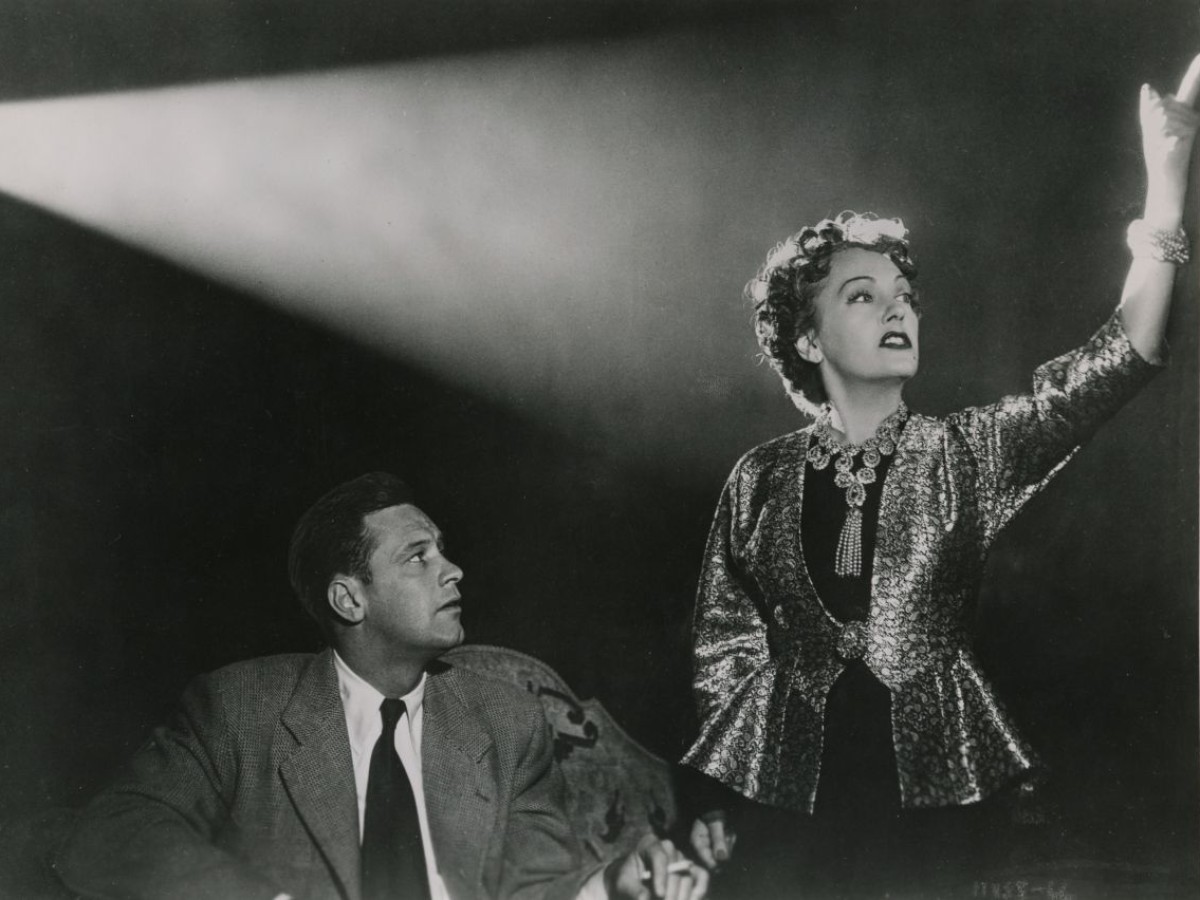Hall of Mirrors
Hollywood on Hollywood, 1950-62
January 19 to February 9, 2012
In the nineteen-fifties, the American film industry discovered a major new theme: itself. This is not to suggest that there had not previously been examples of films about fallen stars or the glamour of the California "film colony," but rather that the enormous increase in films about these subjects after 1950 marks a striking dividing line – and mirrors the dusk of the "Golden Age" of Hollywood cinema.
When undertaking this self-reflection of its own history and conflict-ridden present, Hollywood remained faithful to its most reliable genres: whether film noir (Sunset Boulevard, In a Lonely Place), color-drenched musical (Singin' in the Rain, A Star is Born), fiery melodrama (The Bad and the Beautiful) or psychological horror film ((What Ever Happened to Baby Jane?) – most of these tales take place in a relatively familiar narrative space. Stylistically however, many works in this series tend towards excess and high flights of mannerism – towards forms of representation and perception that are known from walking through a hall of mirrors.
The reasons for this peculiar compression of themes are varied – from the new media competition (American television experienced its greatest expansion between 1947 and 1952) and the restrictions on major studios arising from anti-trust legislation (1948-49) to the Hollywood witch-hunts of Senator McCarthy and the far-reaching transformation in the concept of realism after the Second World War: disillusionment, myth-busting, and anti-heroes abounded. The gain in credibility that always accompanies such processes allows the spiral of the culture industry to continue turning: Whoever is established and “mature” enough to allow a look behind the scenes and to acknowledge the myth as a myth also gains a second wind and a new freedom. In the mean time, the myth can be modernized and new sets and scenery can be developed.
If Fifties American cinema celebrates its own historicity and artifice, this also occurs in service of emancipation – employing very different means but aiming for similar goals as those pursued by Italian neo-realism or the French New Wave. This hall of mirrors reflects an era of popular culture which, for the next quarter-century or so, would grant cinema a real starring role in public discourse: because it had finally gained an awareness of itself.
The retrospective includes 12 features and several shorts, as well as a lecture by Drehli Robnik. The project is presented in collaboration with the Vienna Jewish Museum where the exhibition "Bigger Than Life – 100 Years of Hollywood” is on view until April 15, 2012. For more information, go to www.jmw.at
